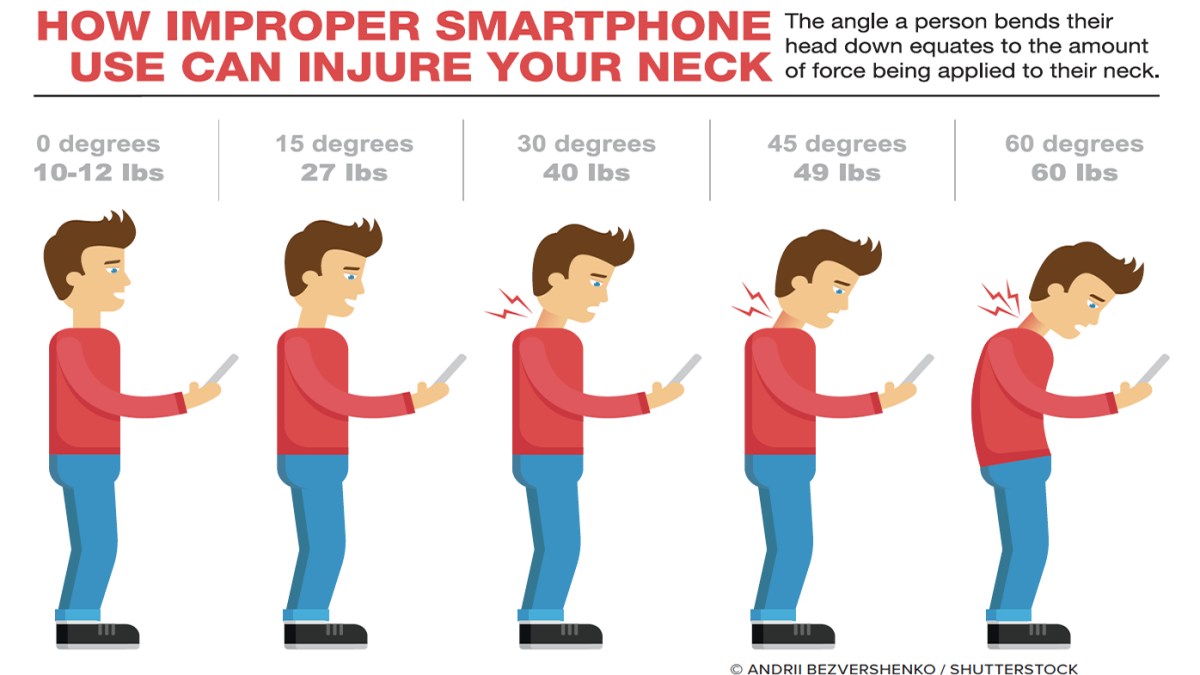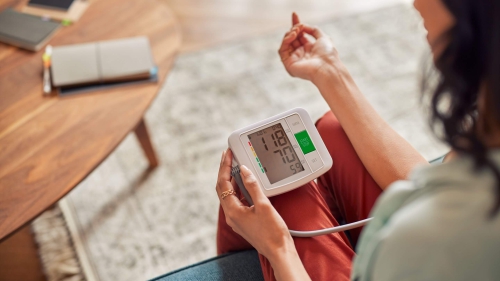Text Neck: Neck Pain

In all religious and non-religious groups, health is a state of physical, psychological, and social well-being. For religious people, it is considered the greatest blessing God has given humankind. As the use of technology is increasingly becoming invasive, we are discovering its impact on various parts of our lives. We hope this article will help address some important health issues.
Using proper posture and ergonomics with your mobile devices can help prevent “text neck”
Are you experiencing neck, upper back and shoulder pain? You could be suffering from “text neck.”
Text neck is not an official medical diagnosis but a term used for symptoms in the neck related to the improper use of mobile devices, such as cellphones.
The neck is a stalk that holds up the head, which weighs about 15 pounds. When you stand up straight, the weight of your head falls directly over your neck, exerting about 10 to 12 pounds of force on the neck as it maintains balance.
When you flex your neck, the demands of these muscles increase substantially. For every 10 degrees of flex, the force on the neck increases by 10 pounds. When the neck is fully flexed, the typical position while texting, the force on the neck is approximately 60 pounds. The musculature eventually fatigues and you experience pain in the neck, upper back and shoulders. Other effects can include more rounded shoulders, painful motion, reduced mobility and headaches.
Treating the pain
If there are no associated symptoms such as numbness, tingling, weakness or pain in the extremities, nonsteroidal anti-inflammatory drugs such as ibuprofen in combination with acetaminophen can be helpful to alleviate pain. Muscle relaxants are generally used when there are severe muscle contractions or cramps.
Stretching it out
Once the pain has been alleviated, the next step is to establish your range of motion. Exercises such as rolling your head in a circular motion, flexion/extension and side bending will help to loosen up the muscles.
Shoulder elevation—bringing the shoulders as far back and as far forward as possible—is recommended. You can combine these in a circular motion. Chin tuck exercises are also helpful.
Half of the patients with text neck resolve their pain within two weeks and 90% within six to eight weeks.
Prevention
To decrease neck flexion and stress on the neck with your smartphone, the most direct option is to use your arms to raise the device to eye level, which transfers the work from your neck to your shoulder muscles to maintain position. Use a chair with armrests to alleviate some of the effort required or, if you’re standing, find a stand or platform that allows you to rest your arms and/or the device at eye level. A stand or platform would also be your best option for a laptop or tablet. Using voice recognition technology instead of manually typing can also alleviate any stress on your back, neck and shoulders.
Source: Costco Connection

















